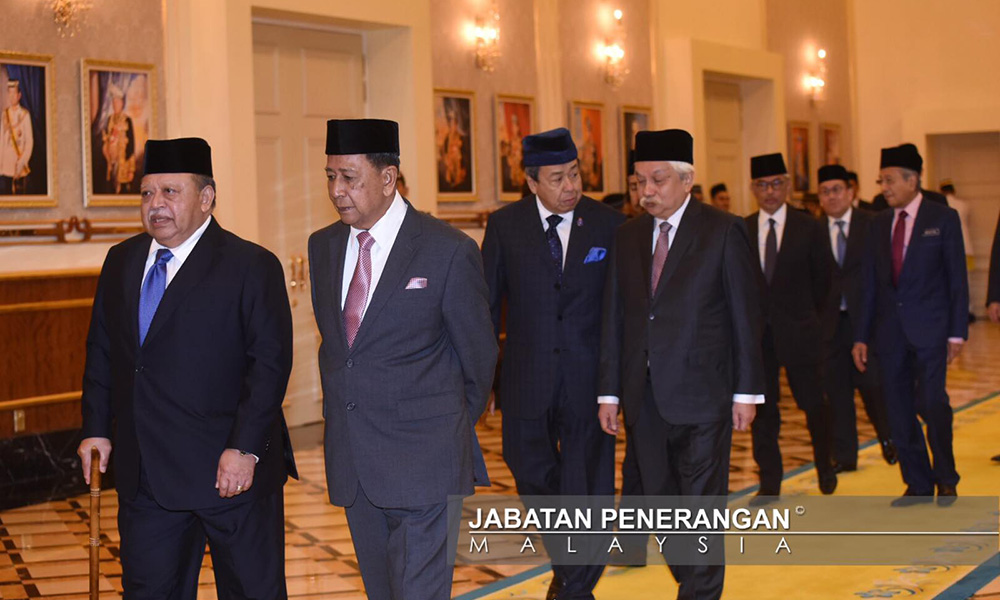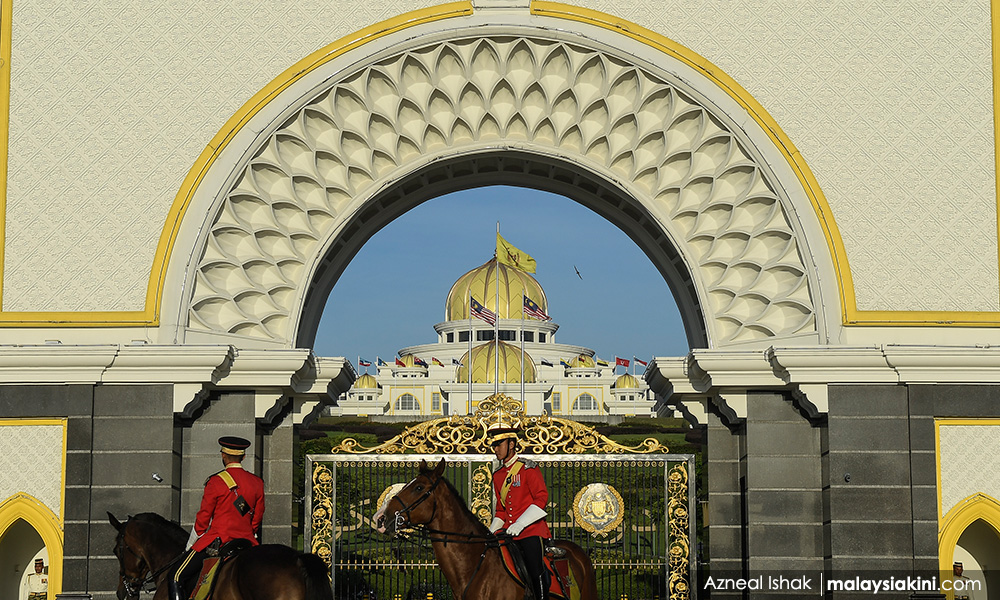This Thursday, the nation will witness the election of the Yang di-Pertuan Agong for the 16th time since it attained independence 61 years ago.
This election process is in line with Malaysia’s constitutional monarchy, where one of the nine Malay rulers or sultans will ascend the federal throne to become the Yang di-Pertuan Agong for a five-year term.
The office of the head of state fell vacant when Sultan Muhammad V, in an unprecedented move, stepped down as the Yang di-Pertuan Agong on Jan 6.
The Conference of Rulers came forth to handle the situation in a mature and harmonious manner, thus averting the development of any crisis.
The Conference of Rulers will carry out its functions as provided for under Article 38(6)(a) of the Federal Constitution to elect a new Yang di-Pertuan Agong and Deputy Yang di-Pertuan Agong.
Only the nine Malay rulers among the members of the Conference of Rulers will participate in the election process at a special meeting to be convened by the latter.
How is the election carried out?
The first part of the Third Schedule of the Federal Constitution states that a ruler is qualified to be elected Yang di-Pertuan Agong unless he is a minor or does not desire to be elected as King.

A ruler is also deemed as not qualified to exercise the functions of the Yang di-Pertuan Agong if the Conference of Rulers resolves that he is unsuitable by reason of infirmity of mind or body or for any other reason.
Constitutional law expert Associate Prof Dr Shamrahayu A. Aziz said matters involving the election of the Yang di-Pertuan Agong and his deputy or dismissing the King was at the discretion of the Conference of Rulers.
On the election process, Section 2 of the Third Schedule of the Federal Constitution states that the Conference of Rulers has to offer the office of Yang di-Pertuan Agong to the ruler qualified for election and whose state is first on the election list.
If the ruler concerned turns down the offer, the Conference of Rulers can offer the office to the ruler of the next state on the election list and so on until the ruler accepts the offer.
Rotation basis
The election of the Yang di-Pertuan Agong is based on a rotation basis agreed upon by all the nine Malay rulers. The first cycle of the rotation, from 1957 (when the office of the Yang di-Pertuan Agong was established) to 1994, saw Negeri Sembilan at the top of the election list, followed by Selangor, Perlis, Terengganu, Kedah, Kelantan, Pahang, Johor and Perak.
According to Section 4 (1) (a) of the Third Schedule, the election list “shall for the purpose of the first election (in 1957) be a list comprising the states of all the rulers in the order in which their Royal Highnesses then recognise precedence among themselves”.
However, the election list will undergo variations with each election. After each election, the state whose ruler was elected as Yang di-Pertuan Agong shall be transferred to the end of the list.
Shamrahayu also pointed to Section 4(2)(b) of the Third Schedule, which states that when “there is a change in the ruler of a state then on the list, that state shall be transferred to the end of the list”.
She said in accordance with this provision, there was a possibility that Pahang might find itself being put at the end of the election list as Tengku Abdullah was only proclaimed the sixth Sultan of Pahang on Jan 15.
“There is a possibility that Pahang, which is currently on top of the election list, will be placed at the end of the list due to the change in the state’s ruler. However, the final decision is at the discretion of the Conference of Rulers,” she said.
Secret ballot
The official portal of the Conference of Rulers, meanwhile, has outlined the proceedings involving the election of the Yang di-Pertuan Agong.
The election is carried out by a secret ballot using unnumbered ballot papers but marked with the same pen and ink. The ballot papers are then inserted into the ballot box. As soon as the result is announced, the ballot papers are destroyed in the presence of the rulers.

The ruler with the shortest reign who is not listed as a candidate for the office of the Yang di-Pertuan Agong or Deputy Yang di-Pertuan Agong is appointed to count the ballot papers together with the Keeper of the Rulers’ Seal.
Only the rulers, Keeper of the Rulers’ Seal and the assistant secretary to the Conference of Rulers are involved in the election process.
During the election process, the Keeper of the Rulers’ Seal will provide each ruler with a ballot paper (with the name of only one candidate) and each ruler is requested to indicate whether or not the candidate is suitable to be elected as Yang di-Pertuan Agong.
The candidate must secure a majority of five votes before the ruler presiding over the election meeting offers him the office of the Yang di-Pertuan Agong.
If the successful candidate declines the offer or if the candidate fails to secure the required number of votes, the voting process is repeated with the nomination of the second-most senior ruler in the seniority list of rulers.
The process is completed only after the ruler has accepted the offer of office of Yang di-Pertuan Agong, following which the Conference of Rulers will declare the ruler concerned as the Yang di-Pertuan Agong who will hold office for a term of five years.
- Bernama

